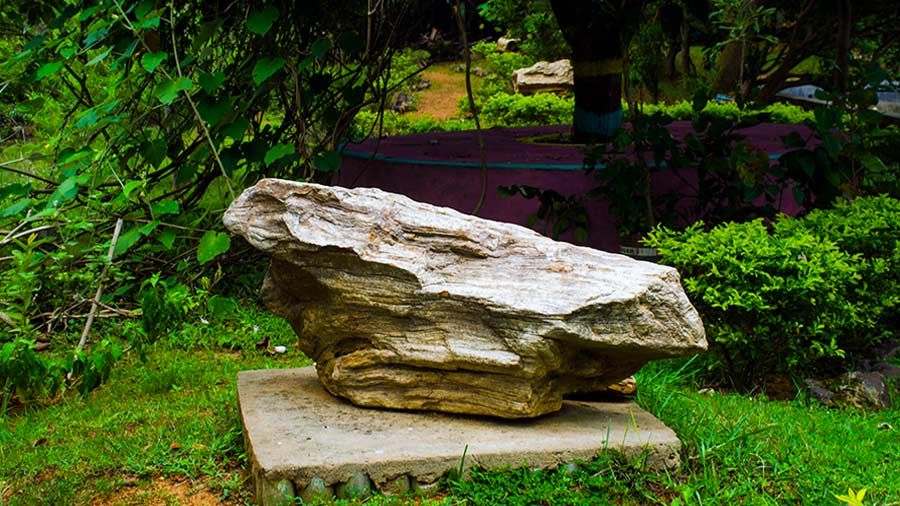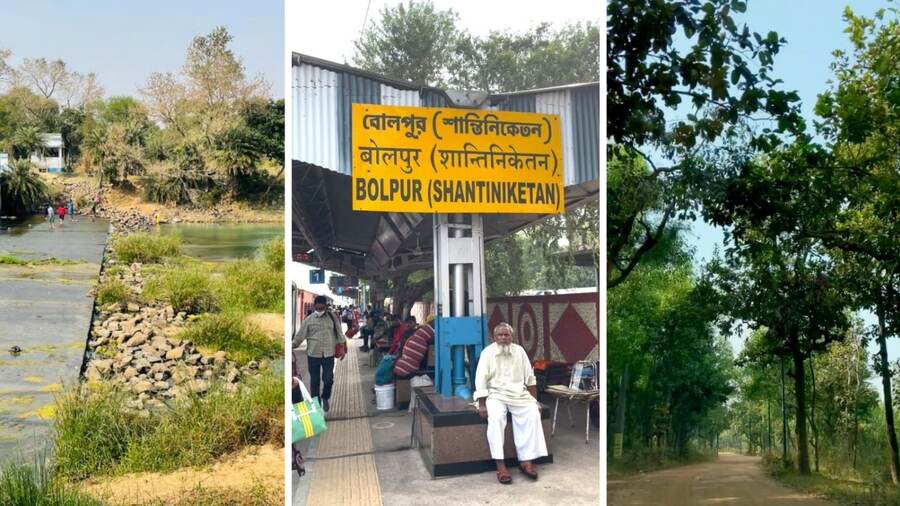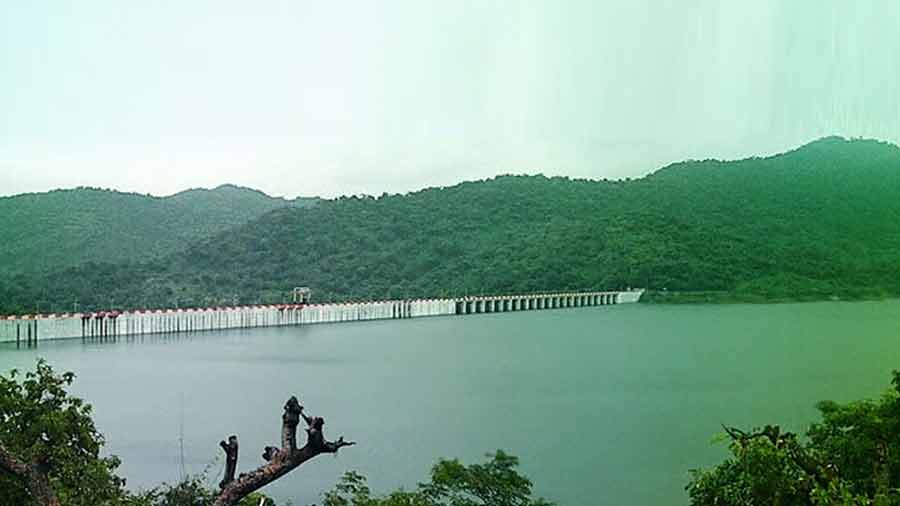The villagers of Amkhoi village, near Bolpur, while digging a pond in 2006, stumbled upon giant bone-like structures. Unable to figure out what they were, they informed the local administration. These led to a scientific investigation revealing that what looked like giant bones were actually fossilised wood. Scientific digging continued at the pond site, extracting more such fossilised wood specimens, which were estimated to be 15- to 20-million-years old.
Fossilised or petrified wood is often aesthetically pleasing and have a soft lustre with colourful hues. They are considered as semi-precious ‘stones’ and often used in jewellery — fetching a good market value. So, as the news of the discovery spread, they attracted fossil hunters from far and wide, leading to vandalism of the site.

Another example of a wood fossil
In order to protect the fossils, the entire area was converted into a fossil park in 2017-18. Known as the Amkhoi Wood Fossil Park, it aims to create awareness about fossils among students and common people, and also tries to help scholars in their research.

The entrance of the park
A pathway from the entrance leads to the pond from where the fossils were initially found. A large wood fossil is on display on a platform at the centre of the pond. The pathway leads to an open space, where the fossils are displayed with bilingual boards narrating the details of not only the fossils, but also about the process of fossilisation.

The path through the park
One of the displays mentions: “Fossils are preserved remains, impression or traces of any once living things from the past geological age. Specimens are usually considered to be fossil if they are preserved for over 10,000 years.” They further mention fossilised wood is usually known as petrified wood, where the organic materials are replaced with minerals, while maintaining the original structure of the wood. The minerals add colour to the petrified wood.

Minerals add colour to the petrified wood
The fossils displayed are trunk portions of flowering trees that have turned into rock-like structures due to petrification. Scientific investigation has also revealed that the trees were originally part of a forest that thrived in the uplands of Rajmahal and Chotanagpur Hills. It is presumed that the trees were carried by floods and deposited under fine sand and clay, gradually transforming them into fossils. The fossils found here belong to Dipterocarpaceae, Anacardiaceae, Combretacea and Leguminosae families of plants. The fossil park also doubles up as a botanical garden, with labelled and newly planted living trees.

The park also doubles up as a botanical garden
Park Information
- There is an entrance fee of Rs 10 and Rs 5 for students and children
- The park is open from 10am – 4pm, and closed on Wednesdays
- The park lies at the edge of Illambazaar town
- It is easily approached from Bolpur and Santiniketan
- Facilities at the park entrance include paid car parking, washrooms and a tea shop
Rangan Datta is a mathematics and management teacher by profession and a travel writer and photographer by passion. He has been addicted to discovering off-beat places since his undergraduate days at St. Xavier's College. Blogging and contributing to Wikipedia are his other passions.


